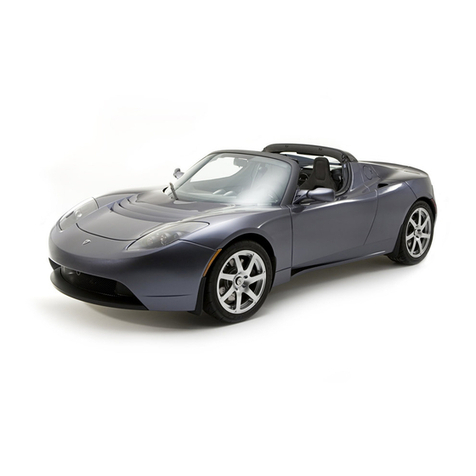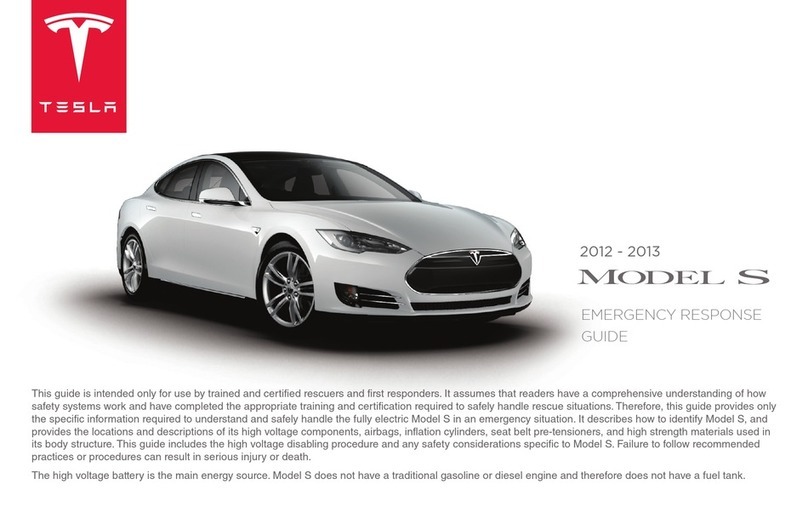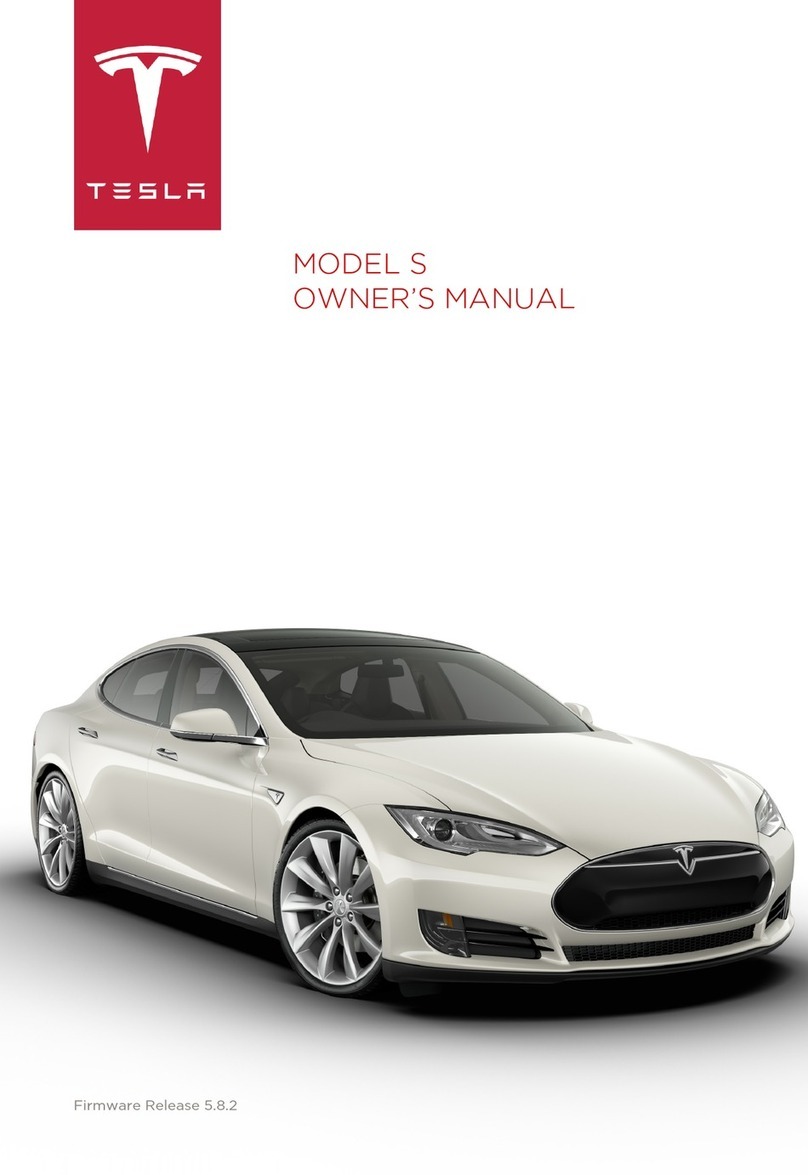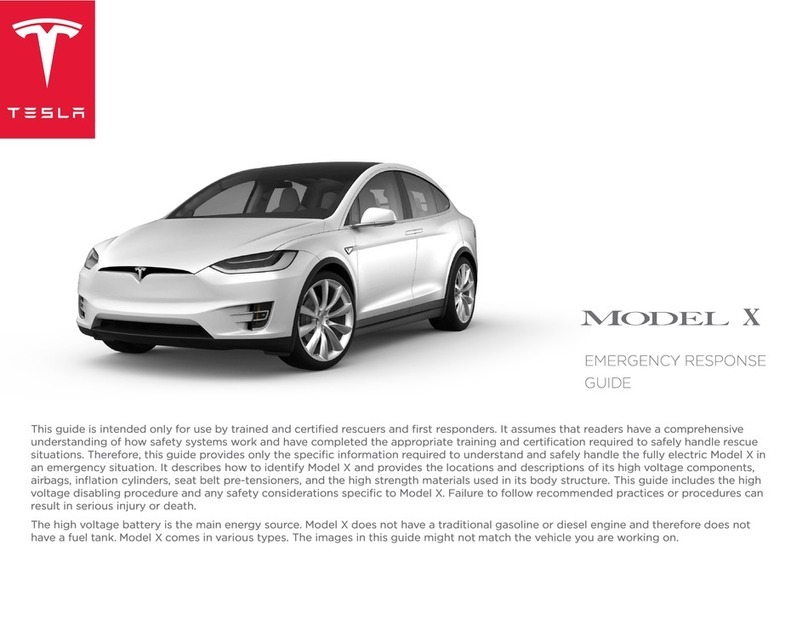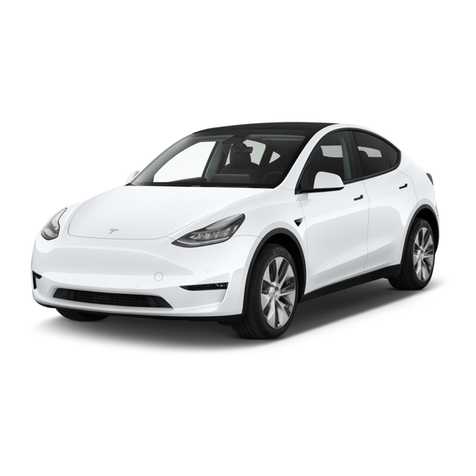TN-21-16-001 R1 Page 2 of 12
WARNING: If the HV battery is compromised with a visible open hole, crack, or tear (Figures 1 and 2), the Service
Center should not perform any additional inspections, and recommend the customer replace the HV battery. No
further diagnosis is needed as Tesla recommends an HV battery replacement for any visible open hole, crack, or tear
to meet Tesla’s standards of quality and safety.
NOTE: If at any point during the inspection the damage requires a HV battery, advise the customer that the HV
battery requires replacement to meet Tesla’s standards of quality and safety. Tesla does not recommend driving the
vehicle until the HV battery is replaced. Since the new HV battery replacement is not covered under the vehicle
warranty, the Service Center should recommend that the customer replace the HV battery and provide the customer
a price quote for the HV battery replacement. The warranty does not cover the HV battery damage because it was
caused by an external impact.
NOTE: If a replacement HV battery is recommended for any out of warranty repair and the customer declines the
repair, refer to Article 6101300 for the appropriate next actions.
WARNING: Failure to follow all High Voltage (HV) safety precautions, including the use of personal protective
equipment, when working on or around HV components may result in serious injury or property damage. Only
technicians who have completed Tesla’s Mechanical, Electrical, and Trim training course should diagnose, repair, or
replace HV components. In addition, all repair and operating instructions should be reviewed and understood before
working on Tesla vehicles or associated repair equipment.
WARNING: An HV battery poses a significant high voltage and electrocution risk if the outer enclosure or safety
circuits have been compromised or have been significantly damaged. Proper Personal Protective Equipment (PPE)
and insulating HV gloves with a minimum rating of class 0 (1000V) must be worn any time a high voltage component
is handled. Refer to Technical Note TN-15-92-003, “High Voltage Awareness Care Points” for additional safety
information.
WARNING: If the battery or vehicle displays signs of escaping gases, smoke, flames, excessive heat, sparks, or
arcing, contact the local emergency department and refer to the Emergency Response Guide, available at
http://www.tesla.com/firstresponders and/or TN-13-16-007, “Lithium-Ion Battery Emergency Response Guide, Model
S, X, 3, and Y”. Gases or smoke exiting a lithium-ion HV battery are likely flammable and could ignite at any time.
WARNING: Avoid contact with gases escaping from the battery. Vented gases might irritate the eyes, skin, and
throat. Vent gas temperatures can exceed 600ºC (1,110ºF). Contact with hot gases can cause burns.
